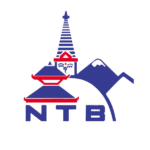13th Jun, 2025
At Nepal Unique Treks, we bring over 20 years of expert experience in trekking and climbing in Nepal. As a local agency, we specialize in offering personalized and authentic trekking experiences across Nepal’s breathtaking landscapes. Our founder, with two decades of firsthand knowledge, leads each expedition to ensure safety, cultural immersion, and unforgettable adventures. Whether you're exploring the Everest region, Annapurna Circuit, or hidden gems off the beaten path, our team provides expert guidance, local insights, and unwavering support. Join us to experience Nepal’s natural beauty, rich heritage, and the thrill of mountain exploration like never before. Here, we describe Nepal Trekking trips to ensure proper preparation for your trekking adventure in Nepal.
Table of Contents
Nepal Trekking
Nepal Trekking offers an unparalleled adventure through some of the world's most stunning landscapes. From the iconic Everest Base Camp to the scenic Annapurna Circuit, Nepal’s trekking routes cater to all levels of trekkers. The country’s diverse terrain encompasses lush valleys, dense forests, and towering snow-capped peaks, offering a unique blend of natural beauty and cultural richness. Trekkers can explore traditional villages, ancient monasteries, and vibrant cultures, all while surrounded by the majestic Himalayas. Whether you're seeking a challenging high-altitude trek or a short, leisurely hike, Nepal trekking promises an unforgettable experience in one of the world’s most remarkable destinations.
2. Best Treks in Nepal
Nepal is a trekking paradise, offering some of the best trekking routes in the world, each with its unique charm and challenges. Everest Base Camp Trek is one of the most iconic, taking trekkers through Sherpa villages, lush forests, and offering breathtaking views of the world’s highest peak, Mount Everest. For those seeking diversity in landscapes, the Annapurna Circuit Trek is a classic, taking you through subtropical forests, alpine meadows, and across the Thorong La Pass, offering panoramic views of the Annapurna range.
The Langtang Valley Trek offers a quieter, scenic alternative with views of glaciers and a chance to experience the Tamang culture. Ghorepani Poon Hill is perfect for beginners or those with limited time, offering stunning sunrise views over the Himalayas. For seasoned trekkers, the Manaslu Circuit Trek provides a more remote and rugged adventure. Regardless of your skill level, Nepal’s treks offer unparalleled beauty, culture, and adventure.
3. Everest Base Camp Trek
The Everest Base Camp Trek is one of the most iconic and adventurous treks in the world, attracting thousands of trekkers every year. Located in Nepal’s Khumbu region, it offers an awe-inspiring journey through traditional Sherpa villages, lush forests, and high-altitude terrains, all with the backdrop of the majestic Himalayas. The trek typically begins in Lukla and takes about 12-14 days to reach Everest Base Camp, passing through towns like Namche Bazaar and Tengboche.
Along the way, trekkers get to witness panoramic views of Everest, Lhotse, Nuptse, and other towering peaks. The trek is not only a test of physical endurance but also an opportunity to experience the unique Sherpa culture, Buddhist monasteries, and the famous Khumbu Glacier. Despite its challenges, the feeling of standing at the base of the world’s highest peak is a surreal and unforgettable experience. It’s an adventure that blends natural beauty with spiritual significance.
4. Annapurna Circuit Trek
The Annapurna Circuit Trek is a renowned and diverse trekking route in Nepal, offering trekkers a rich mix of natural beauty, cultural experiences, and varied landscapes. Spanning about 160-230 kilometers, the circuit takes trekkers through lush subtropical forests, terraced fields, and traditional Gurung and Magar villages. The trek crosses the Thorong La Pass (5,416 meters), one of the highest trekking passes in the world, offering spectacular views of the Annapurna and Dhaulagiri mountain ranges.
The journey offers a chance to experience diverse ecosystems, ranging from tropical jungles to alpine meadows and high deserts. Along the way, trekkers can explore ancient monasteries, hot springs, and traditional mountain settlements. The Annapurna Circuit’s variation in altitude and terrain provides a unique blend of challenges, making it a rewarding trek. With its mix of cultural richness, stunning vistas, and varied landscapes, the Annapurna Circuit is often considered one of the best treks in the world.
5. Langtang Valley Trek
The Langtang Valley Trek is a stunning and relatively less crowded trekking route in Nepal, located just north of Kathmandu, near the Tibetan border. This trek takes you through beautiful forests of oak, rhododendron, and bamboo, alongside crystal-clear rivers, with views of towering peaks like Langtang Lirung (7,227 meters) and Ganchenpo. The trek is known for its close proximity to the Langtang National Park, which is home to diverse wildlife, including red pandas, Himalayan tahr, and several bird species.
The route also passes through charming Tamang and Sherpa villages, where trekkers can immerse themselves in the unique culture and traditions of the local communities. The highest point on the trek is Kyanjin Ri or Tsergo Ri, which offers breathtaking panoramic views of the surrounding Himalayan peaks. The Langtang Valley Trek is a perfect balance of natural beauty, cultural richness, and moderate trekking difficulty, making it an unforgettable adventure.
6. Ghorepani Poon Hill Trek
The Ghorepani Poon Hill Trek is a short, scenic trek in Nepal’s Annapurna region, ideal for those seeking stunning views of the Himalayas without the challenge of a long trek. It typically takes 4-5 days and is known for its ease, making it accessible to trekkers of all experience levels. The trek starts from Nayapul and ascends through charming villages like Tikhedhunga and Ghorepani, offering an immersive experience in traditional Gurung and Magar cultures.
The highlight of the trek is the sunrise view from Poon Hill (3,210 meters), where trekkers are rewarded with panoramic vistas of some of the highest peaks in the Annapurna and Dhaulagiri ranges. The route also winds through lush rhododendron forests, which are especially beautiful in spring when the flowers are in full bloom. With its combination of natural beauty, cultural richness, and relatively easy difficulty, the Ghorepani Poon Hill Trek is a perfect introduction to trekking in Nepal.
7. Trekking in Nepal for Beginners
Trekking in Nepal offers an unforgettable adventure for beginners, with a variety of routes catering to different levels of fitness and experience. For those new to trekking, the country’s shorter, moderate trails like the Ghorepani Poon Hill Trek or the Langtang Valley Trek are ideal. These routes typically range from 4-10 days and offer stunning views of the Himalayas, while being manageable for those with basic fitness.
The trails are well-marked, with guesthouses and tea houses along the way, providing comfort and an opportunity to interact with locals. Nepal’s trekking routes also offer a chance to experience rich cultural heritage, from traditional villages to Buddhist monasteries. Trekkers can enjoy the tranquility of nature, explore lush forests, and witness spectacular mountain vistas without the need for extreme technical skills. With the right guidance, preparation, and acclimatization, trekking in Nepal can be a rewarding and accessible experience for beginners.
8. Short Treks in Nepal
Short treks in Nepal offer a perfect blend of adventure, culture, and nature for those with limited time. These treks typically range from 3 to 7 days and take you to some of Nepal’s most stunning landscapes, including lush forests, traditional villages, and majestic mountain views. Popular short treks include the Ghorepani Poon Hill Trek, Langtang Valley Trek, and the Annapurna Panorama Trek, each offering breathtaking vistas of the Himalayas.
These treks are relatively easy to moderate, making them ideal for beginners or those seeking a quick escape into nature without the physical demands of longer expeditions. Along the way, trekkers can experience the unique culture and hospitality of the local communities, including the Gurung, Tamang, and Sherpa people. Short treks are a fantastic way to immerse oneself in Nepal’s natural beauty and rich heritage, all while avoiding the more strenuous trekking routes.
9. Nepal Trekking Packages
Nepal trekking packages offer a variety of options for adventurers looking to explore the diverse landscapes and rich cultures of the Himalayas. These packages range from short treks like the Ghorepani Poon Hill Trek to longer expeditions such as the Everest Base Camp or Annapurna Circuit. Most packages include transportation, accommodation, guides, and permits, providing a hassle-free experience for trekkers.
They are designed to cater to different fitness levels, with routes suitable for beginners to seasoned trekkers. Some packages also include cultural experiences, allowing trekkers to visit local villages, monasteries, and interact with indigenous communities. For those seeking a more personalized adventure, private trekking packages can be arranged. With options covering various difficulty levels and durations, Nepal trekking packages offer a fantastic way to immerse in the beauty of the Himalayas while ensuring safety, comfort, and local expertise along the journey.
10. Trekking Tours in Nepal
Trekking tours in Nepal offer a unique opportunity to explore the stunning landscapes and rich culture of the Himalayas. From the towering peaks of Mount Everest to the lush valleys of Annapurna, these tours cater to a wide range of trekkers, from beginners to seasoned adventurers. Popular trekking routes like the Everest Base Camp Trek, Annapurna Circuit, and Langtang Valley trek provide breathtaking views, diverse terrain, and a chance to experience Nepal’s diverse flora, fauna, and cultures.
Most trekking tours are led by experienced guides who ensure safety and help trekkers navigate remote trails. Along the way, trekkers stay in teahouses or lodges, experiencing the warmth and hospitality of local Sherpa, Tamang, and Gurung communities. These tours offer a perfect blend of adventure, physical challenge, and cultural immersion, making them an unforgettable experience for anyone looking to explore the heart of Nepal’s Himalayas.
11. Nepal Trekking Routes
Nepal offers some of the world’s most renowned trekking routes, known for their stunning landscapes and cultural richness. The Everest Base Camp Trek is the most famous, taking trekkers through Sherpa villages and offering breathtaking views of Mount Everest. The Annapurna Circuit is another popular route, offering diverse terrain, from subtropical forests to high-altitude deserts, with panoramic views of the Annapurna and Dhaulagiri ranges.
For those seeking a less crowded experience, the Langtang Valley Trek offers beautiful alpine scenery and a closer cultural experience with Tamang communities. The Manaslu Circuit is a challenging trek with rugged terrain and remote villages, providing a more off-the-beaten-path adventure. Other notable routes include the Ghorepani Poon Hill Trek, perfect for beginners, and the Kanchenjunga Base Camp Trek, ideal for seasoned trekkers seeking solitude. Each route provides an unforgettable blend of natural beauty, spirituality, and hospitality.
12. Solo Trekking in Nepal
Solo trekking in Nepal offers a unique, personal adventure for those seeking solitude and a deeper connection with nature. It allows trekkers to experience the raw beauty of Nepal's landscapes and cultures at their own pace. Popular solo trekking routes include the Annapurna Circuit, Everest Base Camp, and Langtang Valley, each offering distinct experiences.
While solo trekking can be rewarding, it requires thorough preparation, as remote areas may lack modern facilities. It's essential to be self-reliant, carry adequate gear, and have a solid understanding of the route and weather conditions. Hiring a guide or porter is recommended for safety, especially in unfamiliar terrain. The sense of independence and self-discovery makes solo trekking a transformative experience. However, trekkers should always register with the local authorities, stay informed about the route, and be cautious of altitude sickness. Nepal’s warm hospitality and stunning views make solo trekking unforgettable.
13. Trekking Permits for Nepal
Trekking in Nepal is an exhilarating experience, but it requires proper permits to ensure both safety and preservation of the environment. The type of trekking permit depends on the region you are visiting, and there are several key permits to be aware of:
1. TIMS (Trekkers’ Information Management System): Most treks in Nepal require a TIMS card, which helps the government keep track of trekkers for safety reasons. It is available in two categories: individual and group. The TIMS is necessary for trekkers heading to popular trekking routes.
2. National Park/Conservation Area Permit: Nepal is home to numerous national parks and conservation areas, many of which require a permit. These include the Annapurna Conservation Area, Sagarmatha National Park, Langtang National Park, and others. The fees for these permits vary based on the region.
3. Restricted Area Permits: Some regions, such as Upper Mustang, Manaslu, and Dolpo, are considered restricted areas due to their cultural or geopolitical significance. Special permits are required to trek in these areas, often at higher costs, and usually necessitate a licensed guide and/or a group trek.
Permits can be obtained at the Nepal Tourism Board in Kathmandu or through licensed trekking agencies. It's crucial to carry your permits during the trek, as they may be checked at checkpoints along the trail.
14. Trekking in Nepal Best Time
Trekking in Nepal is an unforgettable adventure, offering some of the world’s most breathtaking landscapes, diverse cultures, and challenging trails. The best time to trek in Nepal is generally during the pre-monsoon (spring) and post-monsoon (autumn) seasons, as these periods offer the most favorable weather conditions.
Spring (March to May) is an excellent time for trekking, with moderate temperatures, clear skies, and blooming rhododendrons adding beauty to the trails. The weather is mild, and the days are longer, making it a great time for longer treks like the Annapurna Circuit or Everest Base Camp.
Autumn (September to November) is considered the peak trekking season in Nepal. After the monsoon rains, the air is crisp, the skies are clear, and the views of the mountains are stunning. The weather is stable, and most trekking routes are open, attracting trekkers from all over the world.
While trekking in Nepal is possible year-round, winter (December to February) can be cold, especially in higher altitudes, and monsoon (June to August) brings heavy rainfall, which can make trekking conditions challenging and slippery. Therefore, spring and autumn remain the best times for trekking to enjoy the best of Nepal’s natural beauty.
15. Luxury Trekking in Nepal
Luxury trekking in Nepal offers a unique blend of adventure and comfort, allowing trekkers to experience the stunning Himalayas without compromising on luxury. Unlike traditional trekking, where accommodations are basic, luxury trekking involves staying in high-end lodges or resorts that offer modern amenities, such as en-suite bathrooms, hot showers, and gourmet meals. These treks are designed for those seeking an elevated experience, combining the thrill of the mountains with the indulgence of first-class service.
The most popular luxury trekking routes in Nepal include Everest Base Camp, Annapurna Sanctuary, and the Langtang Valley. On these routes, trekkers can enjoy exceptional service from highly trained staff, including private guides, porters, and chefs. Special touches like helicopter rides to and from the trailheads, personalized itineraries, and exclusive experiences, such as cultural performances or private mountain views, are often included.
Luxury trekking also focuses on sustainability, with many luxury lodges built with eco-friendly practices. These treks are perfect for those who want to immerse themselves in Nepal’s natural beauty but prefer the comfort of plush accommodations and personalized services. Whether you're indulging in a spa after a day's trek or enjoying fine dining with panoramic views, luxury trekking in Nepal is an unforgettable and unique way to explore the Himalayas.
16. Trekking in Nepal with Kids
Trekking in Nepal with kids is an enriching experience that allows families to explore the stunning landscapes of the Himalayas while enjoying quality time together. Nepal offers several kid-friendly trekking routes that are not too strenuous but still provide an authentic experience of the country's natural beauty and cultural heritage. The most popular family-friendly routes are in regions like Annapurna and Langtang, which feature moderate altitudes and shorter trekking durations, making them ideal for children.
The Ghorepani Poon Hill Trek and the Kathmandu Valley Trek are particularly well-suited for families. These treks have gentle ascents, making them manageable for young trekkers, and the days are relatively short, allowing for plenty of rest stops. Along the way, families can enjoy scenic vistas, local villages, and opportunities to interact with Nepalese culture.
Many of these routes also offer accommodations in comfortable teahouses that cater to families, with warm food and cozy rooms.
Safety is always a priority, and children are encouraged to stay well-hydrated, wear proper footwear, and take plenty of breaks. Trekking with kids provides an amazing chance to introduce them to the wonders of nature, while learning about Nepal's rich traditions and creating lasting memories in one of the world’s most beautiful trekking destinations.
17. Trekking with Guides in Nepal
Trekking with a guide in Nepal is a fantastic way to enhance your trekking experience, offering both safety and insight into the region’s natural beauty and culture. Local guides are invaluable, not only for their expert knowledge of the terrain and trails but also for their deep understanding of Nepalese traditions and customs. They ensure trekkers navigate the routes safely, avoid potential hazards, and make the most of their journey.
Guides in Nepal are usually well-trained, many with certifications from organizations like the Nepal Tourism Board. They provide detailed briefings on the trail, weather conditions, and altitude challenges, making the trek more enjoyable and less stressful. Having a guide also means you don’t need to worry about logistics, as they handle permits, accommodations, and meals, allowing you to focus on the adventure.
Another key advantage of trekking with a guide is the cultural exchange. Guides often share stories, history, and local legends, giving trekkers a deeper connection to Nepal’s rich heritage. In more remote areas, guides can bridge language gaps, facilitating interactions with locals and enhancing the overall experience.
Whether you're trekking to Everest Base Camp, Annapurna, or other regions, having a guide enriches your journey, offering both safety and a more immersive cultural experience in the Himalayas.
18. Trekking Gear for Nepal
Trekking in Nepal requires the right gear to ensure safety, comfort, and performance in the diverse and challenging terrain. Essential items include sturdy hiking boots with good ankle support and durable soles for rocky paths. A layered clothing system is key, featuring moisture-wicking base layers, insulating mid-layers, and a waterproof, windproof outer layer. A warm down or synthetic jacket is crucial for high-altitude cold.
A quality backpack (30-50 liters) with a hydration system, trekking poles, and a sleeping bag rated for cold temperatures is also vital. Sun protection (hat, sunglasses, sunscreen), along with a first aid kit, is necessary for health and safety. Additionally, a headlamp, extra batteries, and a multi-tool can prove invaluable. For high-altitude treks, a personal altitude sickness kit with Diamox and electrolytes is recommended. Finally, make sure to have a reliable camera, power bank, and snacks for energy during the trek.
19. Trekking Adventure in Nepal
Trekking in Nepal offers one of the most exhilarating and diverse adventure experiences in the world. Home to the mighty Himalayas, Nepal boasts treks that range from easy, scenic walks to challenging high-altitude expeditions. The iconic Annapurna Circuit and Everest Base Camp treks are among the most popular, offering jaw-dropping views of snow-capped peaks, deep valleys, and traditional Sherpa villages. Along the way, trekkers can experience rich cultural encounters with Buddhist monasteries, ancient temples, and warm-hearted locals.
The trekking routes take you through lush forests, terraced fields, and across high-altitude passes, each step providing a unique perspective of Nepal's natural beauty. While the lower elevations provide a comfortable experience, higher altitudes demand stamina and proper acclimatization to avoid altitude sickness. Whether you're a beginner or an experienced hiker, Nepal’s trekking adventures are an unforgettable mix of natural beauty, cultural immersion, and physical challenge.
20. Himalayan Trekking in Nepal
Himalayan trekking in Nepal is a dream for adventure enthusiasts, offering unmatched beauty and an immersive experience in one of the world’s most stunning mountain ranges. The Himalayas stretch across Nepal, providing a variety of trekking options for all levels of trekkers. Routes like the Everest Base Camp and Annapurna Circuit are world-renowned, offering panoramic views of towering peaks like Everest, Annapurna, and Machapuchare. As you trek through lush forests, alpine meadows, and ancient villages, you’ll encounter the unique culture of the Sherpas and other mountain communities.
20. Accommodation and food during the trek in Nepal
When trekking with Nepal Unique Treks, accommodation and food are tailored to provide comfort while embracing the rustic charm of Nepal's mountain regions.
Accommodation: During treks, you'll primarily stay in traditional teahouses or lodges, which offer a warm and welcoming atmosphere. These basic accommodations are typically family-run, giving you a chance to experience the local culture and hospitality firsthand. Rooms generally have simple furnishings, with blankets provided, but it’s recommended to bring a sleeping bag for added comfort, especially at higher altitudes. The teahouses offer communal spaces where trekkers can relax, share stories, and enjoy the stunning views. On higher-altitude treks, the facilities may be more basic, but the accommodations still prioritize comfort and safety, providing shelter from the elements and a chance to unwind after a long day of hiking.
Food: The food on the trek is a fusion of local Nepali and international cuisine, prepared fresh at each teahouse. You'll find staple dishes like dal bhat (lentils and rice), which provides great energy for trekking, along with a variety of soups, noodles, momos (dumplings), and fried rice. For breakfast, expect options like porridge, eggs, toast, or pancakes. As you ascend to higher altitudes, the menu may become more limited, but the food remains nourishing and designed to keep you fueled. Drinking plenty of water, tea, and electrolytes is crucial for staying hydrated, especially at higher altitudes.
Nepal Unique Treks ensures that you enjoy an authentic and satisfying trekking experience while maintaining comfort and nutrition throughout your adventure.
Recent Posts
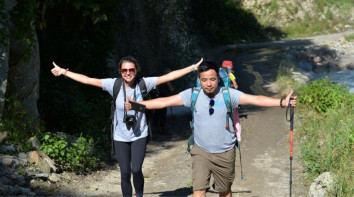
11th Sep, 2022
.jpg)
11th Sep, 2022
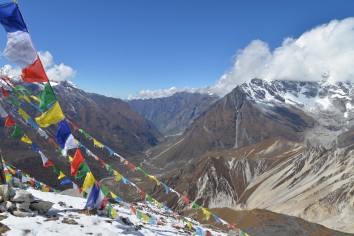
11th Sep, 2022
.jpg)
13th Jan, 2023

14th Mar, 2023
.jpg)
18th Mar, 2023

25th Mar, 2023
.jpg)
30th Mar, 2023

1st Apr, 2023
.jpg)
18th Jul, 2023

10th Mar, 2024
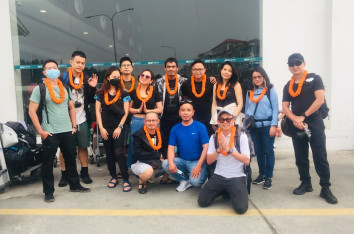
17th Mar, 2024

25th Feb, 2025

19th Mar, 2025

13th Jun, 2025

4th Jul, 2025
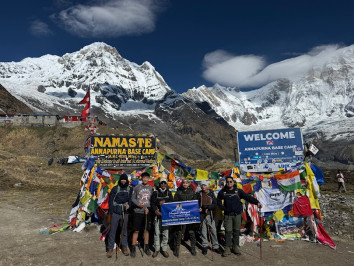
10th Aug, 2025
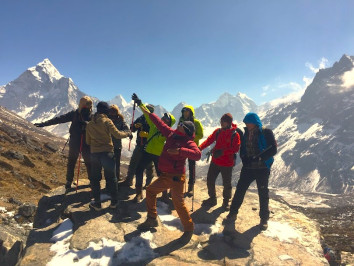
25th Aug, 2025

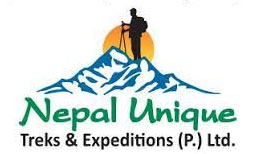
 WhatsApp
WhatsApp  Plan Your Trip
Plan Your Trip
 (1366 x 768 px).jpg)

